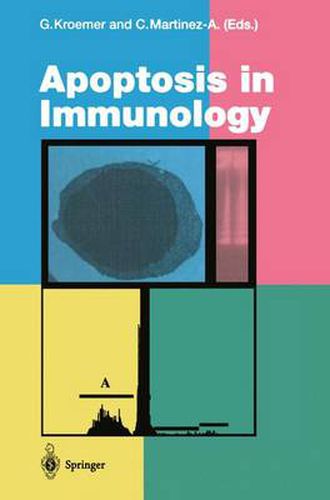Readings Newsletter
Become a Readings Member to make your shopping experience even easier.
Sign in or sign up for free!
You’re not far away from qualifying for FREE standard shipping within Australia
You’ve qualified for FREE standard shipping within Australia
The cart is loading…






This title is printed to order. This book may have been self-published. If so, we cannot guarantee the quality of the content. In the main most books will have gone through the editing process however some may not. We therefore suggest that you be aware of this before ordering this book. If in doubt check either the author or publisher’s details as we are unable to accept any returns unless they are faulty. Please contact us if you have any questions.
In any movement of their life, immune cells, especially T and B lymphocytes, are confronted with an essential choice: to continue their existence or to commit a sort of metabolic suicide that is referred to as apoptosis or programmed cell death. In contrast to most philosophers, lymphocytes and their precursors are constantly susceptible to suicide, and it even appears that the usual cause of T or B cell elimination is suicide rather than death from natural causes, accidents or murder. This book provides a vast overview of lymphocytes suicide: external triggers and internal motives leading to suicidal impulses, accomplices in self-destruction, weapons implicated in self-execution, removal of dead bodies and pharmacological prevention of suicide. Most of the chapters in this book are devoted to the physiology of apoptosis. The goal is to unmask the external triggers of apoptosis, unravel the signal transduction pro cesses involved therein and describe the role of oncogenes, death genes and effector molecules in the apoptotic cas cade. The remaining chapters deal with the pathophysiologi cal aspects of lymphocyte apoptosis, namely, as a host contribution to HIV-induced lymphopenia, and therapeutic strategies for the avoidance of lymphocyte death. We are confident that this compendium will contribute to the exploration of cellular suicide, not only from a basic scientist’s viewpoint but also with regard to the possible clinical implications of apoptosis (dys)regulation. Far from having a depressing effect on the reader, cellular suicide may thus provide a source of both intellectual excitement and therapeutic inspiration.
$9.00 standard shipping within Australia
FREE standard shipping within Australia for orders over $100.00
Express & International shipping calculated at checkout
This title is printed to order. This book may have been self-published. If so, we cannot guarantee the quality of the content. In the main most books will have gone through the editing process however some may not. We therefore suggest that you be aware of this before ordering this book. If in doubt check either the author or publisher’s details as we are unable to accept any returns unless they are faulty. Please contact us if you have any questions.
In any movement of their life, immune cells, especially T and B lymphocytes, are confronted with an essential choice: to continue their existence or to commit a sort of metabolic suicide that is referred to as apoptosis or programmed cell death. In contrast to most philosophers, lymphocytes and their precursors are constantly susceptible to suicide, and it even appears that the usual cause of T or B cell elimination is suicide rather than death from natural causes, accidents or murder. This book provides a vast overview of lymphocytes suicide: external triggers and internal motives leading to suicidal impulses, accomplices in self-destruction, weapons implicated in self-execution, removal of dead bodies and pharmacological prevention of suicide. Most of the chapters in this book are devoted to the physiology of apoptosis. The goal is to unmask the external triggers of apoptosis, unravel the signal transduction pro cesses involved therein and describe the role of oncogenes, death genes and effector molecules in the apoptotic cas cade. The remaining chapters deal with the pathophysiologi cal aspects of lymphocyte apoptosis, namely, as a host contribution to HIV-induced lymphopenia, and therapeutic strategies for the avoidance of lymphocyte death. We are confident that this compendium will contribute to the exploration of cellular suicide, not only from a basic scientist’s viewpoint but also with regard to the possible clinical implications of apoptosis (dys)regulation. Far from having a depressing effect on the reader, cellular suicide may thus provide a source of both intellectual excitement and therapeutic inspiration.